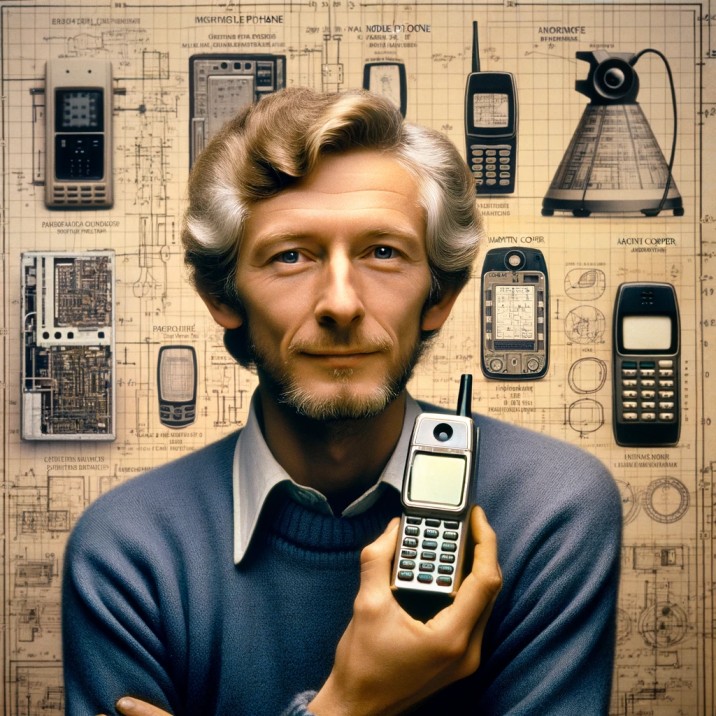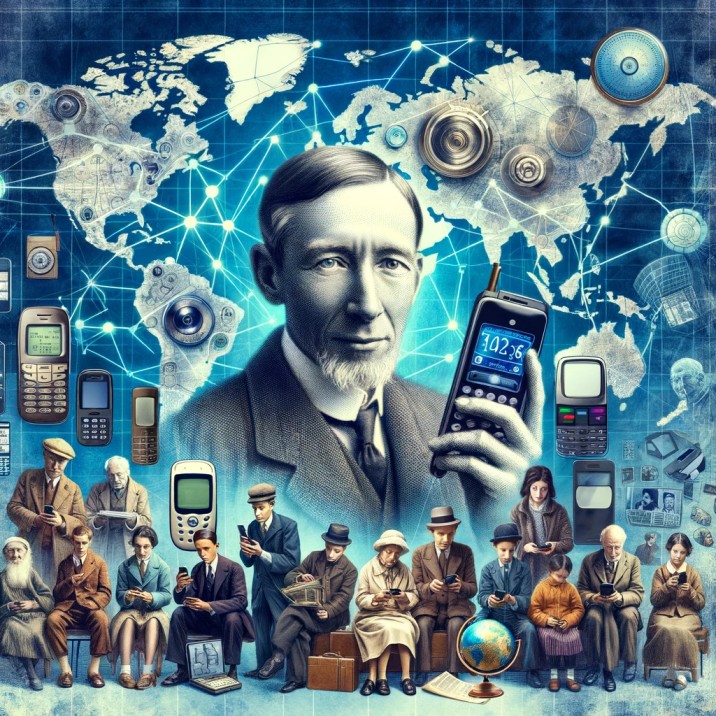The invention of the mobile phone is credited to Martin Cooper. Cooper, who was a researcher and executive at Motorola, led the team that developed the first handheld mobile phone. On April 3, 1973, Cooper made the first public mobile phone call on a device named the Motorola DynaTAC 8000X. This groundbreaking event marked the beginning of the era of mobile telecommunications, leading to the vast, technologically advanced mobile phone industry we have today.
In a world where the mobile phone has become an indispensable part of daily life, it’s fascinating to delve into its origins. The journey of the mobile phone, from a conceptual idea to a pocket-sized device, is a tale of innovation, persistence, and technological breakthroughs. At the heart of this story is Martin Cooper, an engineer whose vision reshaped the way we communicate.
Early Concepts and Development

Before the advent of the mobile phone, communication technologies were primarily anchored to fixed locations. The 1940s saw the development of car phones, but these devices were bulky, expensive, and tied to a limited number of radio channels in a city.
In the 1960s, Bell Labs and AT&T introduced the concept of a cellular network, which divided service areas into “cells,” each with a radio tower, allowing for broader coverage and more efficient use of frequencies. However, their focus remained on car-based systems.
Martin Cooper and Motorola’s Vision

Enter Martin Cooper, a visionary at Motorola, who challenged the status quo. In the early 1970s, Cooper and his team embarked on a project to create a truly portable communication device. Their goal was ambitious: to develop a handheld device that could operate over a cellular network, offering an unprecedented level of personal and mobile communication.
Creating the First Handheld Mobile Phone

The task was daunting. The team needed to overcome significant technical challenges, including miniaturizing components, ensuring reliable connectivity, and managing power consumption. After extensive research and development, they created the prototype that would make history: the Motorola DynaTAC 8000X.
This prototype, a bulky device weighing about 2.5 pounds with a short battery life, was the first of its kind. It had a small screen and a limited number of buttons, but it was a technological marvel for its time.
The Historic First Call
On April 3, 1973, Martin Cooper made the first public mobile phone call from a Manhattan street corner, calling Joel Engel, his counterpart at Bell Labs, to announce the successful creation of the world’s first mobile phone. This event marked a significant turning point in the history of communication.
Evolution and Commercialization

The road from prototype to commercial product was long and fraught with challenges. The DynaTAC 8000X underwent numerous refinements to improve its design, battery life, and functionality. Finally, in 1983, a decade after the first call, the Motorola DynaTAC 8000X was released to the public, with a hefty price tag and a waiting list of eager customers.
Impact and Legacy
The invention of the mobile phone transformed communication, breaking the constraints of wired connections and changing the way people interact with each other. It spurred a wave of innovation and competition in the telecommunications industry, leading to rapid advancements in technology and design.
Today, mobile phones are more than just communication devices; they are integral tools for work, entertainment, and social interaction. The journey from Martin Cooper’s first call on the streets of Manhattan to the sleek, feature-packed smartphones of today is a testament to human ingenuity and the relentless pursuit of technological advancement. The mobile phone, once a novel invention, is now an emblem of modern connectivity and a symbol of the ever-evolving human experience.


